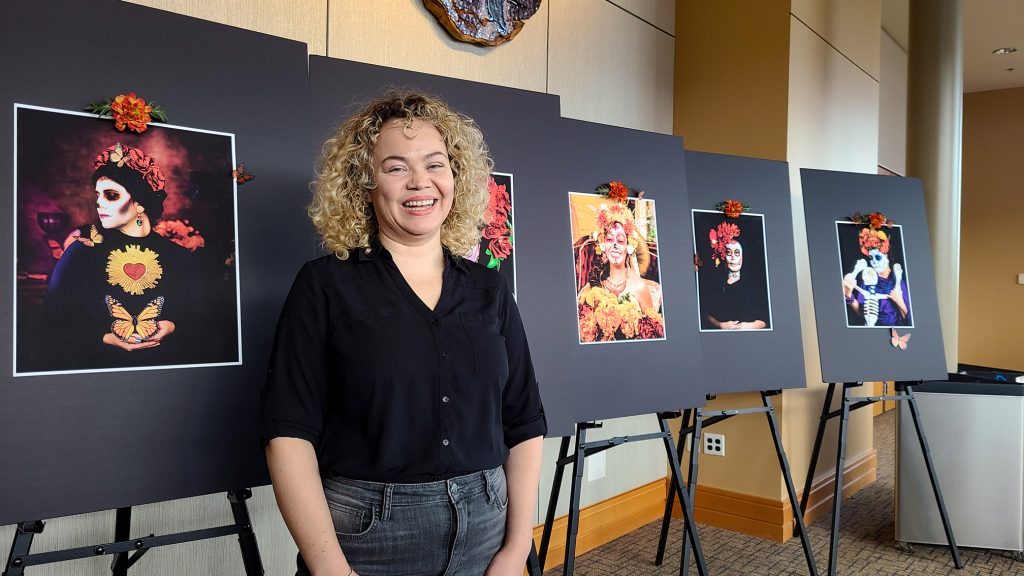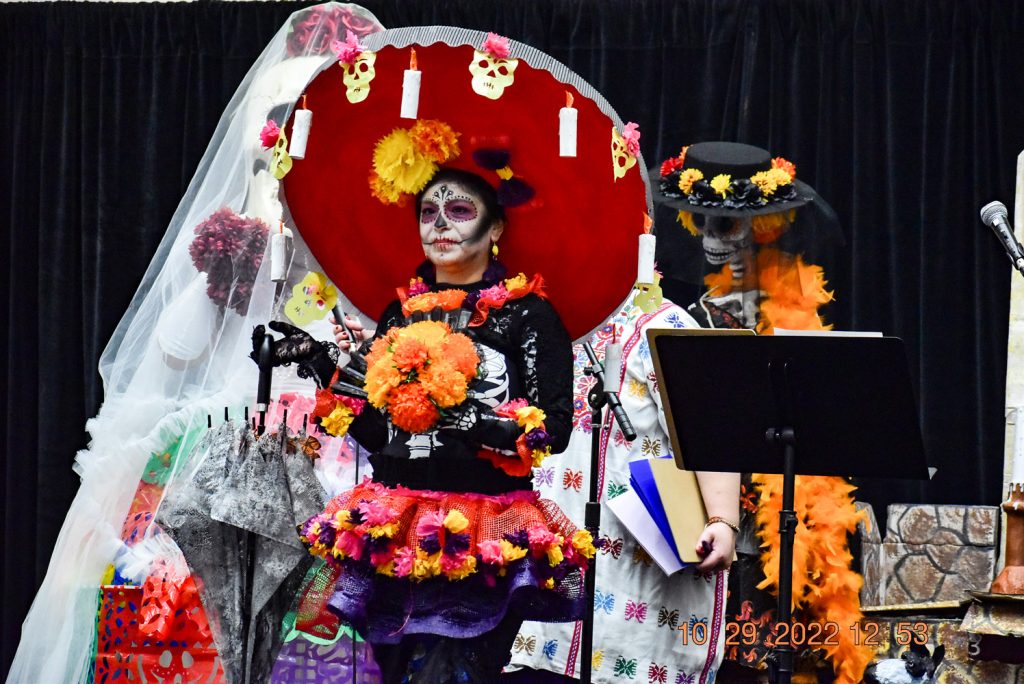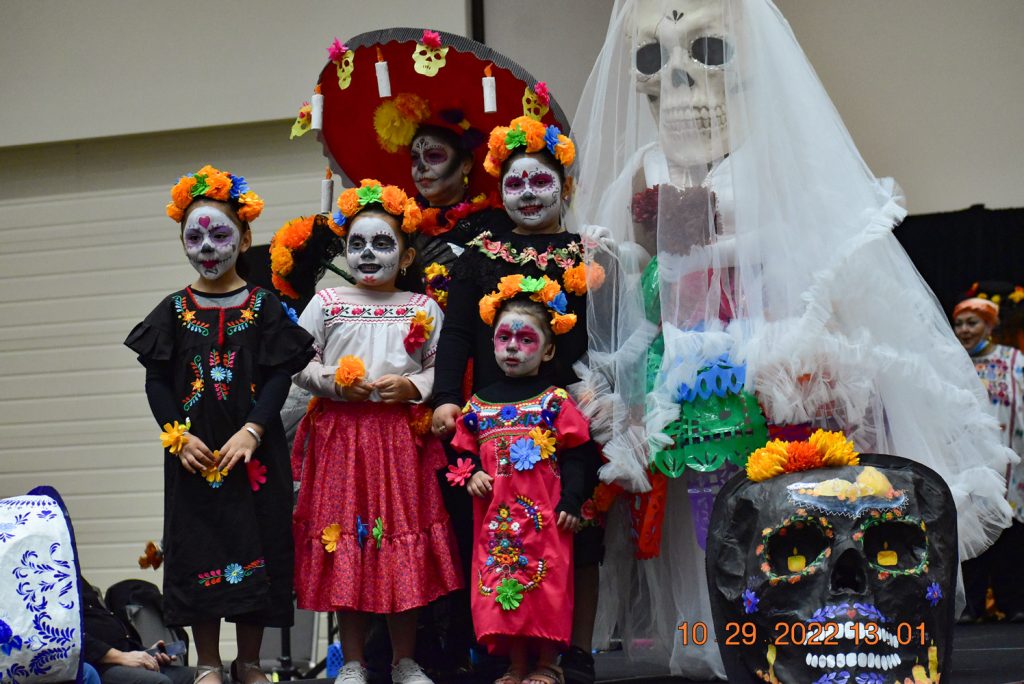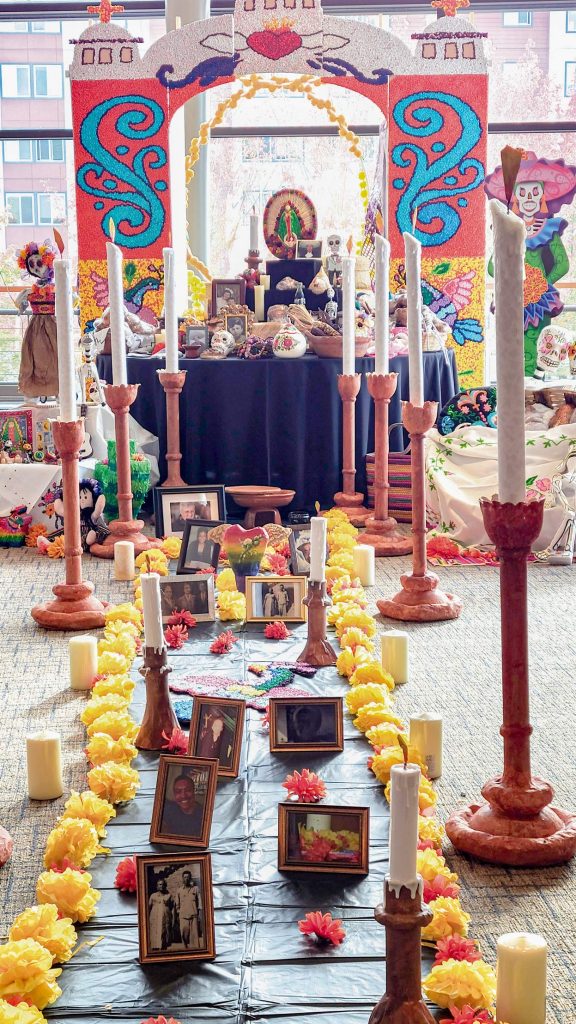LYNNWOOD, Wash., November 25, 2022—The annual Day of the Dead celebration hosted by the WAGRO Foundation returns to Lynnwood, October 29, offering everything from music, to dancing, to artwork, and of course food.
On display were the works of Photographer Mary Gomez Camba, featuring portraits of women dressed up as La Catrina. Camba began photographing women six years ago when she was living in Singapore in an attempt to tell their own, unique, personal, stories.
“I wanted to tell women’s stories that I felt I connected to as a woman,” Camba told the Lynnwood Times. “I feel like I was going through a lot of changes in my life and I wanted to see their stories and see what I could learn from them.”

When Camba returned to Seattle she decided to continue her exhibition while representing the women of her community. During the pandemic Camba noticed that many women had different experiences, some experienced loss while others had more time to redefine themselves. The works on display at the Day of the Dead celebration were 17 unique stories taken from 2021 through 2022 all dealing with the theme of “being reborn”. Camba found her models from the suggestions of her community members including Lynnwood City Councilwoman Julieta Altamirano-Crosby.
[Best_Wordpress_Gallery id=”2″ gal_title=”Day of Dead”]Just some of the stories told through Camba’s portraits include a woman with a tamale business who switched to selling face masks during the pandemic, a 15-year-old girl who was unable to have a quinceañera because event centers were closed, and a mother and daughter who connect with their heritage through dance. Camba’s work allows women to have the opportunity to tell their story, for others to fall in love with their story, to see weakness, to see vulnerability, and accept that as being a part of being human, she told the Lynnwood Times.
“The beginning of my exhibition I wanted to focus on the fact that Dias de los muertos was something that was celebrated before the glamorized Catrina look,” Camba said. “This is something that’s ancestral, that we celebrate that connects us to the celebration of life.”
Camba has photography studio in North Seattle, where she lives, called Portraits of Women.
The event began with a traditional Aztec dance performed by the German-Maldonado family and some close friends. After the dance, a Las Catrinas costume contest was held. Catrinas are recognizable by their iconic skeletal face-paintings and usually wear elaborate headpieces or hats. They’re essentially symbols of the Day of the Dead and that the costumes tell a story.

This year’s costume contest winner was Sylvia Rodriguez who fashioned her costume out of all-recycled material with the message of spreading climate change awareness.
Day of the Dead poems, known as “Calavera Literaria,” were also read during the event. Altamirano says that the poems give insight into how Mexican culture views death. “It’s a way of seeing Mexican culture — life and death, and how we see them.”
“We see it in a satirical way, a funny way,” she explains. “It’s how we embrace death in our lives.”

For the concluding event, artists showcased their Ofrendas. An Ofrenda is essentially an altar adorned with offerings for deceased loved ones. Altamirano explained why they are central to the holiday, saying, “The Ofrendas are offerings for our dead people. It’s a way to communicate with them. They are the elements that guide the soul and the spirit to get to our homes and our lives again.”

Altamirano said that it is customary to place food on the altars that loved ones passed enjoyed and that candles and flowers are also used to help guide the spirits back to their living relatives. Different levels on the altar can also symbolize “earth, life, and heaven,” according to Altamirano.
Of course, no celebration would be complete without delicious food. Volunteers dished out tamales and pan de muerto for the occasion.
Author: Kienan Briscoe










2 Responses